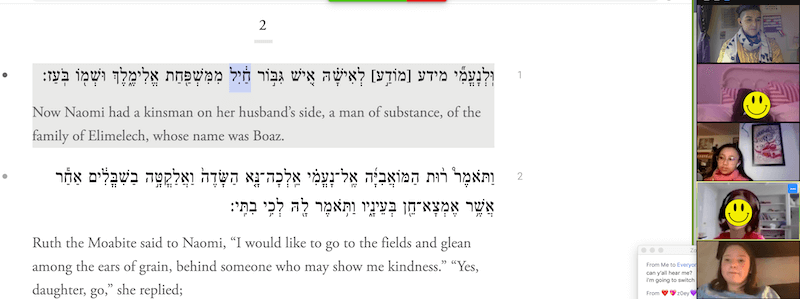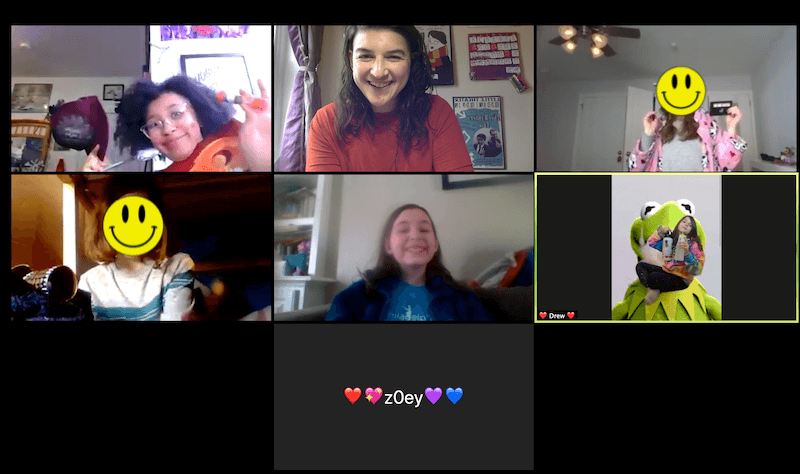
“What communities are you a part of that don’t exist in a particular place?”
While the answer should have been obvious, I was surprised when Ronia said, “Well, right now, Makom.”
The past two weeks have been a disruption in all of our lives, but seeing the faces of the BMitzvah cohort while we daven, learn, and create together, even on a screen, has carried that sense of community forward for us.
The Jewish community in our current text, The Book of Ruth, in some ways feels just as spread out and difficult to access. Ruth starts out an outsider, a Moabite, but she becomes a Jew through marriage. When her husband dies, she moves with her mother-in-law Naomi all the way to Bethlehem, Naomi’s hometown. In Bethlehem, Ruth is both an insider and an outsider. She is Jewish and Naomi’s daughter-in-law, but also a widow and a Moabite.
The text has gotten us thinking about how we are both insiders and outsiders and about how people view us. Zahdi blurted out in the middle of one discussion, “I don’t know what people think of me!” It’s hard to know! But we all draw conclusions about others. Zoey told us a moving story about her great-grandmother’s experience surviving the Holocaust. The story made a strong impression on Zoey, and she dubbed her great-grandmother “The Courageous.”
When Ruth decides to stay with Naomi instead of going back to her family, she says “wherever you go, I will go; wherever you lodge, I will lodge; your people shall be my people, and your God my God” (Ruth 1: 16). That declaration makes Ruth the first convert to Judaism in our tradition. This got us thinking: How does inheriting tradition differ from choosing it? What parts of Jewish tradition have you inherited and what parts do you choose?
Leo thought about how he was uncomfortable or frustrated when he started practicing Judaism, but how aspects of the community grew on him over time. I’m curious to hear more from the cohort about what traditions they connect to and whether that’s because they inherited them in some way or chose them.
We didn’t choose to meet on Zoom, but we’re taking advantage of the opportunity by trying new ways of learning we haven’t tried before! We’ve been using Sefaria for text study, which allows us to not just view the text but also click on words to find their definitions, easily find linking commentary, and even view cool visualizations of how many words each section of Tanakh has!
Zoom has also given us the chance to hear each other lead tefillot like never before as the rest of us have to mute ourselves for the sound quality. We get to hear the slight variations in prayers, such as whether a particular student prefers to say God gives life to kol chai (all life) or meitim (the dead) during the Amidah. When each member of our k’vutzah (group) led a prayer on our first day of tefillah, another student unmuted themselves to say kol hakavod (all the respect). And if that doesn’t feel like community over distance, I don’t know what does!

